Carolina Silverbell Tree
- November 25, 2024
- 0 comment
The Carolina Silverbell Tree, scientifically known as Halesia carolina, is a stunning deciduous tree admired for its bell-shaped flowers and ecological significance.
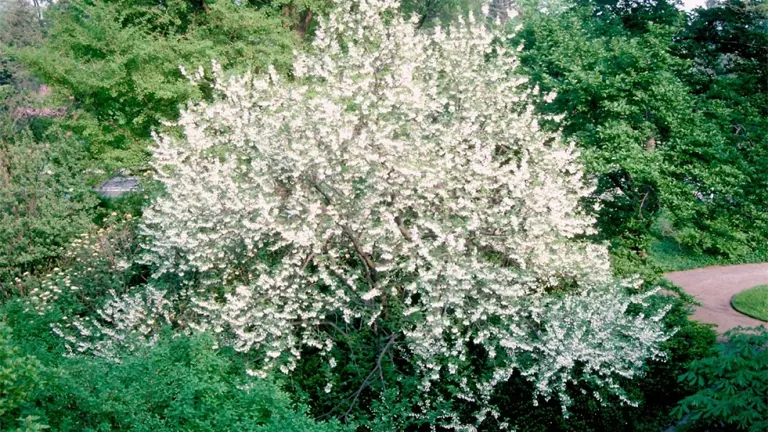
This tree plays a crucial role in forest ecosystems, contributing to biodiversity and providing resources for wildlife. Belonging to the storax family (Styracaceae), the Carolina Silverbell Tree exemplifies the beauty and importance of native flora in maintaining balanced ecosystems.
What Is a Carolina Silverbell Tree?
The Carolina Silverbell Tree, part of the Styracaceae family, is native to the southeastern United States. Renowned for its graceful appearance, this tree can grow up to 30 feet tall, though some specimens reach heights of 80 feet under ideal conditions. Its dark green leaves, smooth gray bark, and delicate white or pale pink flowers make it a favorite among gardeners and nature enthusiasts alike.
Key Characteristics:
- Leaves: Oval-shaped, dark green, turning yellow in the fall.
- Flowers: Bell-shaped, white to pale pink, blooming in clusters in spring.
- Bark: Smooth, gray, with a subtle ridged texture as the tree matures.
- Lifespan: Typically lives for several decades, thriving in suitable environments.
Interesting Fact: Carolina Silverbells improve soil health by contributing organic matter through their fallen leaves and flowers.
Two Different Types of Carolina Silverbell Tree Species
There are several species of Silverbell Trees, with the Halesia carolina being one of the most well-known. Here are a few notable species:
Halesia Diptera (Two-winged Silverbell)
Distinguished by its broader seed pods and slightly smaller stature, it grows in floodplain areas.
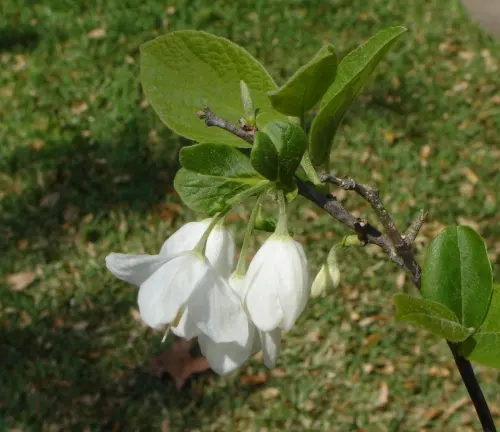
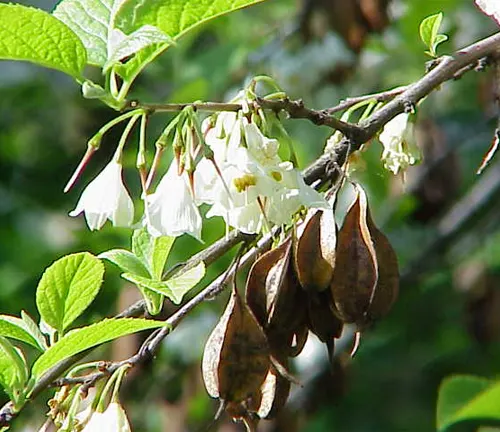
Halesia Monticola (Mountain Silverbell)
Found in higher elevations, this species boasts larger flowers and can grow taller than its counterparts.
These species provide vital ecological benefits, including food for pollinators like bees and shelter for birds.
Where Do Carolina Silverbell Trees Grow?
The Carolina Silverbell Tree thrives in the southeastern United States, from North Carolina to Florida and westward to Texas. These trees prefer:
- Habitat: Moist woodlands, riverbanks, and upland forests.
- Climate: Temperate to subtropical climates with ample rainfall.
Adaptable to different environments, Carolina Silverbells contribute to soil stabilization in floodplains and enhance biodiversity by supporting a variety of insects and animals.
How to Grow and Care for Carolina Silverbell Tree
If you’re considering adding a Carolina Silverbell Tree to your garden, follow these care tips:
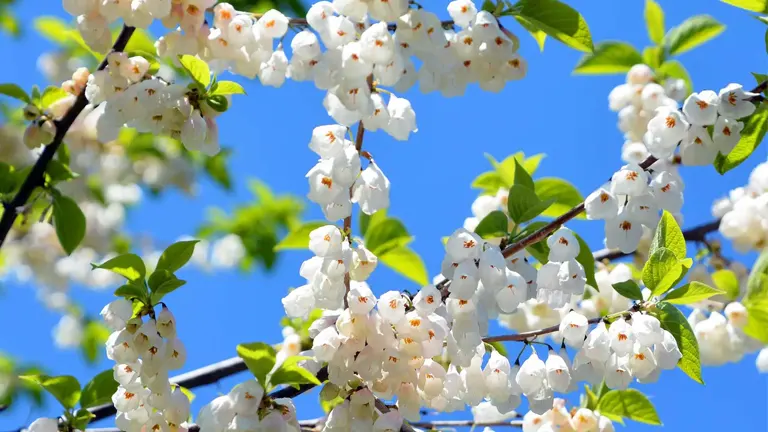
- Soil: Prefers moist, well-drained, slightly acidic soils.
- Sunlight: Thrives in partial to full sun, though it tolerates some shade.
- Watering: Requires consistent moisture, especially during dry periods.
Propagation and Maintenance:
- Seeds: Collect seeds in late summer, stratify them for several months, and plant in spring.
- Cuttings: Use softwood cuttings in summer for quicker propagation.
- Pruning: Prune in late winter to shape the tree and remove dead branches.
- Pest Management: Monitor for pests like aphids or scale and treat with appropriate methods.
Ecological Benefits of Carolina Silverbell Tree
The Carolina Silverbell Tree is a cornerstone of its ecosystem, offering numerous benefits:
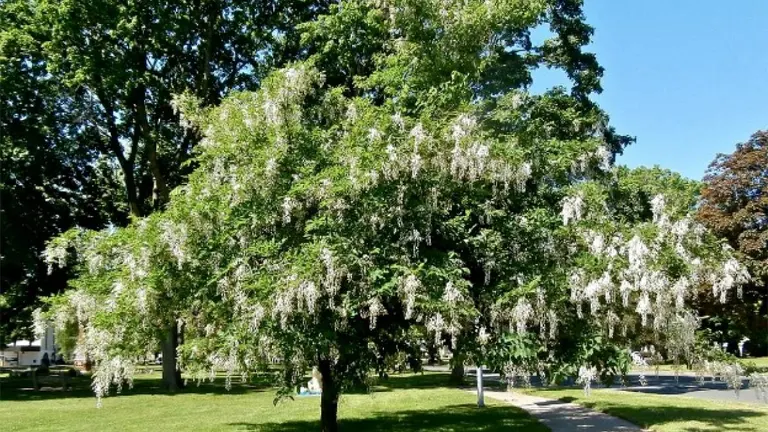
- Soil Improvement: Adds organic material to the soil, enhancing fertility.
- Erosion Control: Stabilizes soil in riverbanks and hilly terrains.
- Wildlife Support: Provides nectar for pollinators, shelter for birds, and habitat for insects.
Carolina Silverbell Tree Flowering and Pollination
The Carolina Silverbell Tree blooms in mid to late spring, with clusters of bell-shaped flowers that dangle elegantly from its branches. These flowers are typically white, though some varieties produce pale pink blooms. The tree attracts bees, butterflies, and other pollinators, making it a valuable part of the food web.
Is Carolina Silverbell Tree Drought-Tolerant?
While the Carolina Silverbell Tree prefers moist conditions, it exhibits moderate drought tolerance once established. However, prolonged dry periods can affect its growth and flowering. Mulching around the base of the tree helps retain soil moisture and protect its roots.
Carolina Silverbell Tree and Wildlife Interactions
The tree supports a variety of wildlife, including:
- Pollinators: Bees and butterflies are drawn to its nectar-rich flowers.
- Birds: Use its branches for nesting and feed on its seeds.
- Insects: Serve as food for insects, which in turn attract larger predators.
This symbiotic relationship highlights the tree’s integral role in sustaining biodiversity.
Final Conclusions
The Carolina Silverbell Tree is more than just a beautiful addition to the landscape. Its ecological benefits, including soil improvement, wildlife support, and erosion control, make it an essential species for environmental health. Whether in the wild or cultivated in gardens, this tree symbolizes the intricate connections within nature and the importance of preserving native species for future generations.
Frequently Asked Questions (FAQs)
- What is the Carolina Silverbell Tree’s scientific name?
The scientific name is Halesia carolina. - What are its key characteristics?
It has dark green leaves, bell-shaped white or pale pink flowers, smooth gray bark, and a moderate lifespan of several decades. - Where does the Carolina Silverbell Tree grow?
It is native to the southeastern U.S., thriving in moist woodlands, riverbanks, and upland forests with temperate to subtropical climates. - What are the common species of the Carolina Silverbell Tree?
Halesia carolina, Halesia diptera (Two-winged Silverbell), and Halesia monticola (Mountain Silverbell). - How do you grow and care for it?
Plant in well-drained, slightly acidic soil with consistent moisture and partial to full sunlight. Prune in late winter and monitor for pests. - What ecological benefits does it provide?
It improves soil health, prevents erosion, supports pollinators, and provides food and shelter for wildlife. - When does the Carolina Silverbell Tree flower?
It blooms in mid to late spring with clusters of bell-shaped flowers, attracting pollinators like bees and butterflies. - Is the Carolina Silverbell Tree drought-tolerant?
It tolerates moderate drought once established but prefers moist soil for optimal growth.
We hope this guide has highlighted the beauty and importance of the Carolina Silverbell Tree. Share your experiences or ideas to inspire others and contribute to its preservation. Don’t forget to share this guide with nature lovers passionate about protecting our environment.


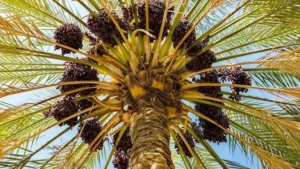

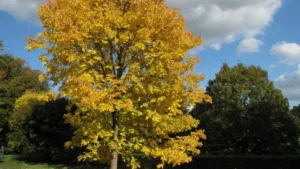

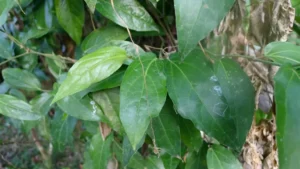




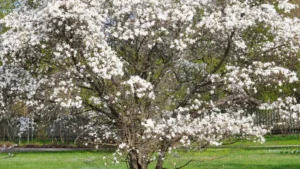

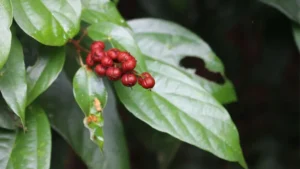
Leave your comment